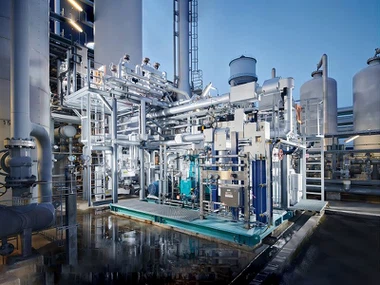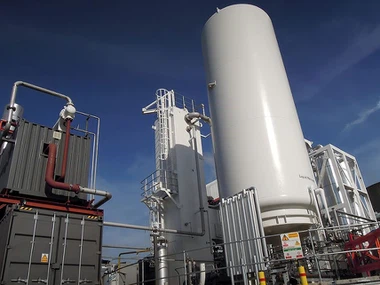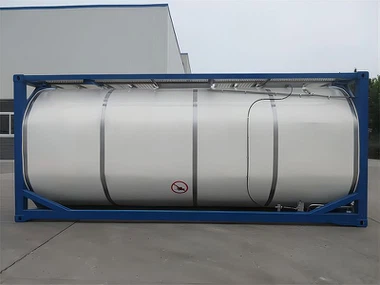
PSA Oxygen Generator Plant
Description
Technical Parameters
Main Production Capabilities
●Raw air pretreatment: Air passes through filters to remove dust, degreasers to remove oil, and dryers to remove humidity (dew point ≤ -40°C), resulting in clean, dry compressed air.
●Pressurized adsorption separation: Clean air is pressurized to 0.6-1.0 MPa by an air compressor and enters an adsorption tower filled with zeolite molecular sieves (two towers operating alternately). Under pressure, the molecular sieves preferentially adsorb impurities such as nitrogen and carbon dioxide, producing oxygen with a purity of 93% ± 3% (up to 99.5% at the high end).
●Decompression desorption regeneration: After one tower reaches saturation, the adsorption continues in the other tower. The saturated tower is depressurized to ambient pressure, allowing the molecular sieve to release impurities and restore adsorption activity.
●Oxygen pressure-regulated output: Oxygen is temporarily stored in a buffer tank and regulated to 0.2-1.0 MPa (fluctuation ≤ ±0.02 MPa) by a stabilizing valve. Once purity meets the standard, it is delivered to the oxygen user. The adsorption-desorption cycle lasts only 1-3 minutes, ensuring continuous oxygen supply.

Technological advantages
Highly Efficient and Energy-Saving
No cryogenic refrigeration system is required, consuming 60%-70% of the energy of traditional air separation units. Using air as raw material, it eliminates bottled oxygen costs and offers a 1.5-2.5-year payback period.
Stable and Fast Response
Dual adsorption towers operate alternately, with a 1-3 minute cycle time and 24-hour continuous supply. Startup time is 15-30 minutes to reach target, adapting to fluctuating oxygen demand.
Durable and Easy to Maintain
The molecular sieve has a lifespan of 3-5 years, with an annual failure rate of less than 5%. Only filter element replacement is required daily, allowing for unattended operation and low maintenance costs.
Flexible Adaptability
The system occupies 40%-60% of the space of traditional equipment, offers customizable oxygen production and pressure, and supports parallel expansion, making it suitable for diverse applications.
PSA Oxygen Generator Plant Application
●Healthcare: Providing medical oxygen to hospital ICUs, wards, and community health centers, replacing bottled oxygen and avoiding the risk of supply disruptions, meeting patient respiratory support and medical equipment gas needs.
●Industrial Manufacturing: Used in steel smelting, non-ferrous metal smelting, glass processing, and other applications, oxygen-enriched combustion can improve combustion efficiency by 20%-30%, reducing fuel consumption and pollutant emissions.
●Aquaculture: Oxygenating fish and shrimp ponds and nursery water to increase dissolved oxygen levels to 5-8 mg/L, improving the aquaculture environment and increasing survival rates and growth rates. Suitable for farms of all sizes.
●Food Processing: In juice and beer bottling, and in the preservation of meat, fruits, and vegetables, oxygen (or combined with nitrogen) is added to regulate the atmosphere within the package, delaying oxidation and spoilage, and extending shelf life.
fAQ
1.When purchasing PSA oxygen generators, how can you determine the appropriate oxygen output and purity specifications based on your specific oxygen needs?
First, you need to clarify the specific oxygen usage scenario (e.g., medical or industrial), the average daily oxygen usage duration, and the peak oxygen usage. For example, hospitals need to calculate based on the number of beds plus ICU oxygen demand (approximately 1-3 LPM per bed), while industrial applications should be calculated based on the oxygen consumption rate of the production process. It's generally recommended to reserve 10%-20% of production capacity to accommodate future demand growth. Regarding purity, medical applications require ≥93% (some require 99.5%), while industrial applications should choose 93% ± 3% to avoid excessively high purity and increased costs.
2.What are the initial purchase costs and ongoing maintenance costs of PSA oxygen generators?
The initial cost includes the equipment itself (adsorption tower, air compressor, etc.), installation and commissioning fees, and the accompanying gas storage tanks. Ongoing maintenance costs primarily include molecular sieve replacement (every 3-5 years, accounting for 60% of the total maintenance cost), filter cartridge replacement, electricity costs, and a small amount of manual inspection fees.
3.Do climate conditions in different regions (such as high temperature, high humidity, and high altitude) affect the operating efficiency of PSA oxygen generators?
High temperatures (>40°C) reduce compressor efficiency, necessitating the installation of cooling fans. High humidity (>85%) can easily cause molecular sieves to become ineffective due to moisture, necessitating an upgrade to the dehumidification module in the pretreatment system. High altitudes, due to the low air density, require the use of high-altitude compressors (to improve suction efficiency).
4.Does the manufacturer provide installation and commissioning services after the equipment arrives?
Regular manufacturers will provide on-site installation and commissioning services, including piping and electrical wiring, system trial runs, and operator training.
Hot Tags: psa oxygen generator plant, China psa oxygen generator plant , suppliers, factory, Psa Oxygen Plant
Send Inquiry
Get in Touch
Write Your Message














